Features of an autobiography – 6 of the best resources for KS2 English
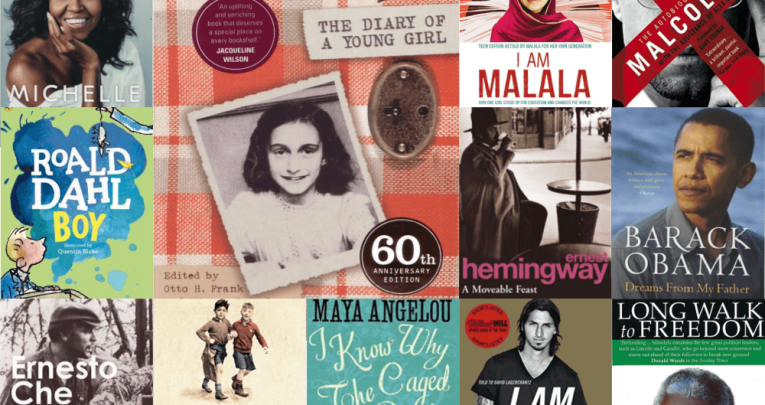
Getting kids to talk about themselves shouldn't be hard, but getting them to create good autobiographical writing, you might need these activities, ideas, templates and worksheets…

- by Teachwire
- Classroom expertise and free resources for teachers

Back before selfies and Instagram feeds the way to tell your own story was to write it.
And sure, your average Key Stage 2 student probably won’t have accumulated enough life experience for the next Long Walk to Freedom, but they can probably do a better job than half the ‘celebrity’ books that hit the shelves in the run-up to Christmas.
And that’s before you’ve even started with these great resources.
1 | Characteristics of an autobiography
This nifty little resource not only includes the great quote in the pic above, it has a good summary of autobiographical writing, explains where the word ‘autobiography’ comes from, and has a few good examples of autobiographical passages to boot.
2 | Roald Dahl book topic
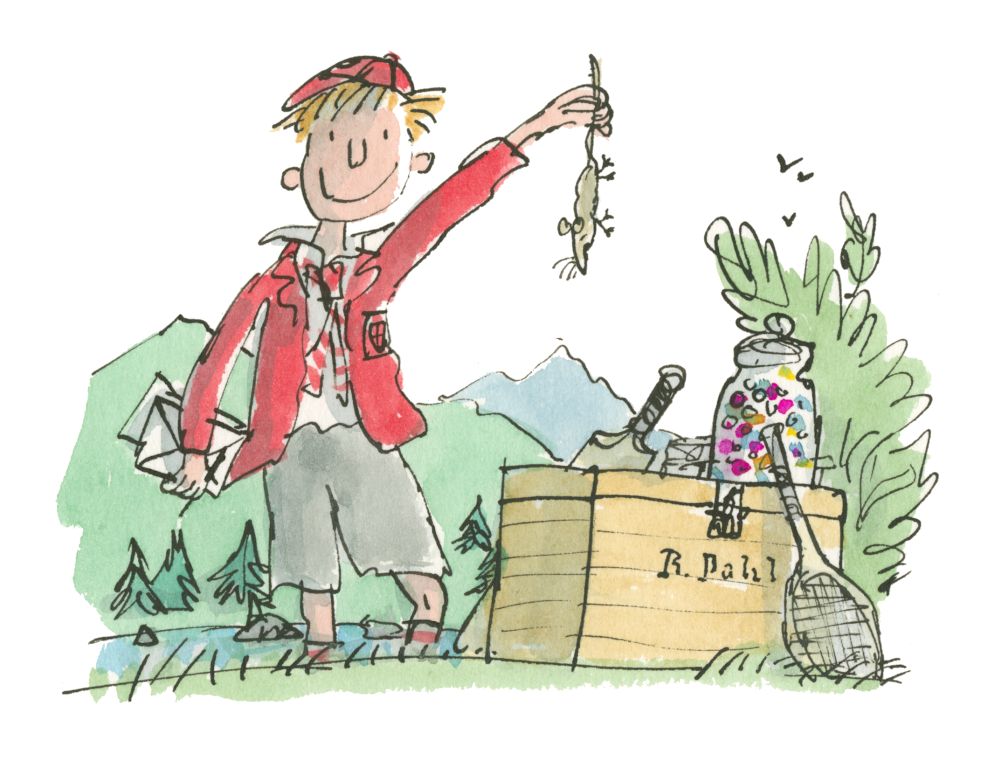
The Great Mouse Plot was one of the stories from Roald Dahl’s childhood autobiography, Boy, where he and his friends pranked the local sweet shop owner by placing a dead mouse in a jar of sweets.
They were duly caught, and caned by their headmaster.
Carey Fluker Hunt’s book topics explores using memories for engaging creative autobiographical writing.
3 | Super hero autobiography example
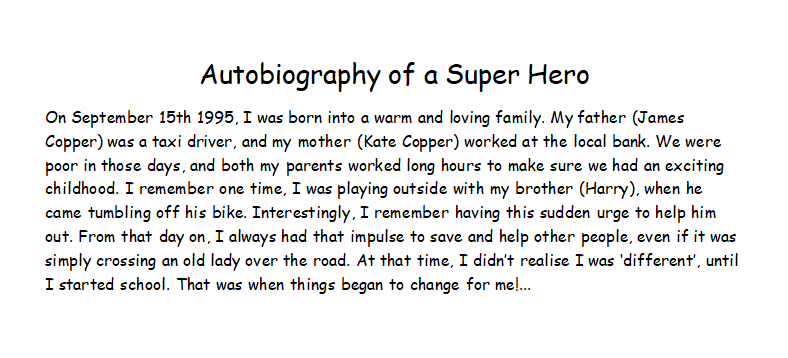
Head on over to Literacy Wagoll’s Biographies and Autobiographies section for a collection of free example texts, including this superhero autobiography.
No doubt your students are more than familiar with comic book movies and have seen countless origin stories, so they should be able to write one for their own created superhero.
It’s the perfect writing hook, coming up with a character and how they got their superpower.
And if you want to actually watch a superhero movie, the first Spider-Man film (AKA the best one) from Sam Raimi is an excellent example (although it does have a 12A rating, so maybe just show clips or talk about it).
It’s opening line? ‘Who am I?’. It’s closing line? ‘Who am I? I’m Spider-Man’. Perfect.
In the meantime, download superhero autobiography example here.
4 | Autobiography checklist
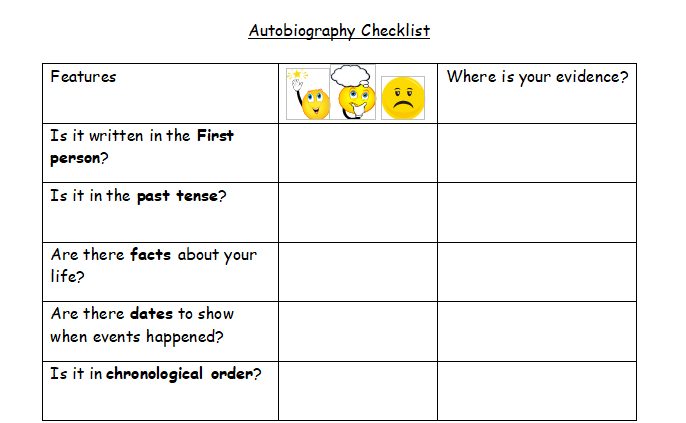
Once your pupils get to writing an autobiographical piece, this checklist might come in handy.
It has the basics like ‘Is it written in the 1st person?’ and ‘Is it written in the past tense?’ but also things like ‘Are there dates to show when events happened?’ and ‘Is there any emotive language?’.
Plus, there’s a column on the sheet where they can show evidence that they’ve included all of these elements.
This resource also includes a biography checklist should you need that too.
5 | The life of Nelson Mandela
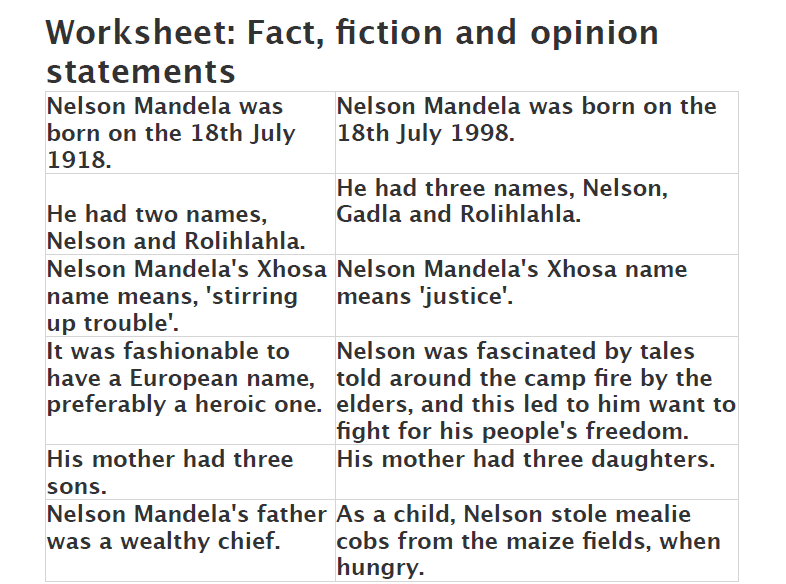
This Oxfam set of resources for upper KS2 explores the life of Nelson Mandela and the differences between biography and autobiography.
They also provide ideas for discussing the difference between explicit and implicit points of view, and the differences between first and third person narration.
There are five lessons, all of which can be found here.
6 | Newspaper template
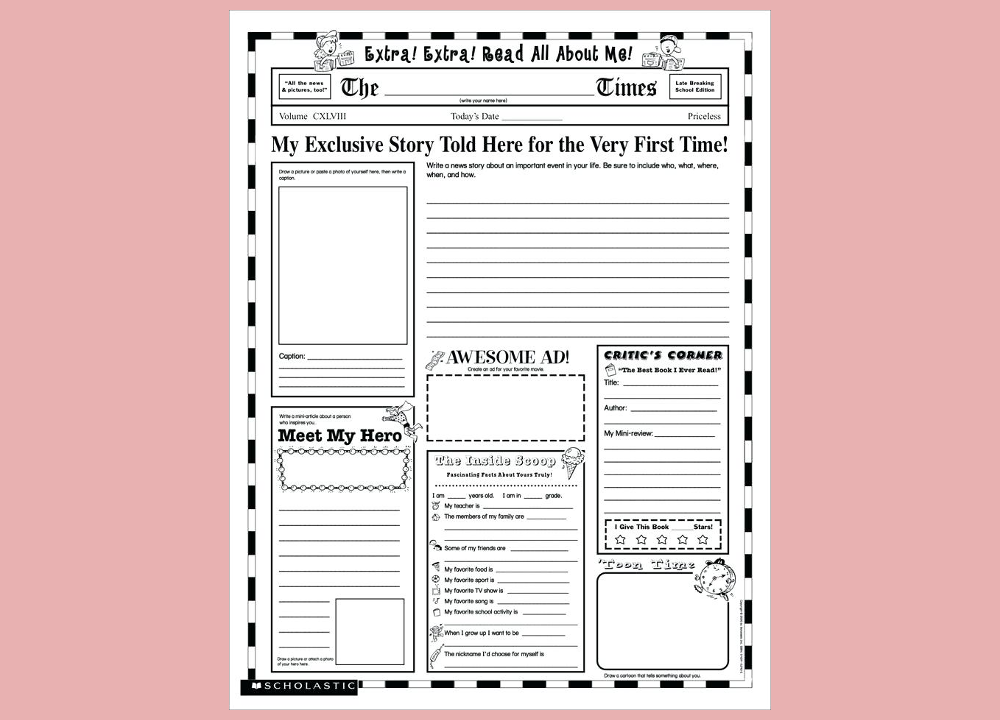
One for younger pupils, this newspaper-style template lets them write all about themselves, their likes and dislikes, their heroes and their hobbies.








